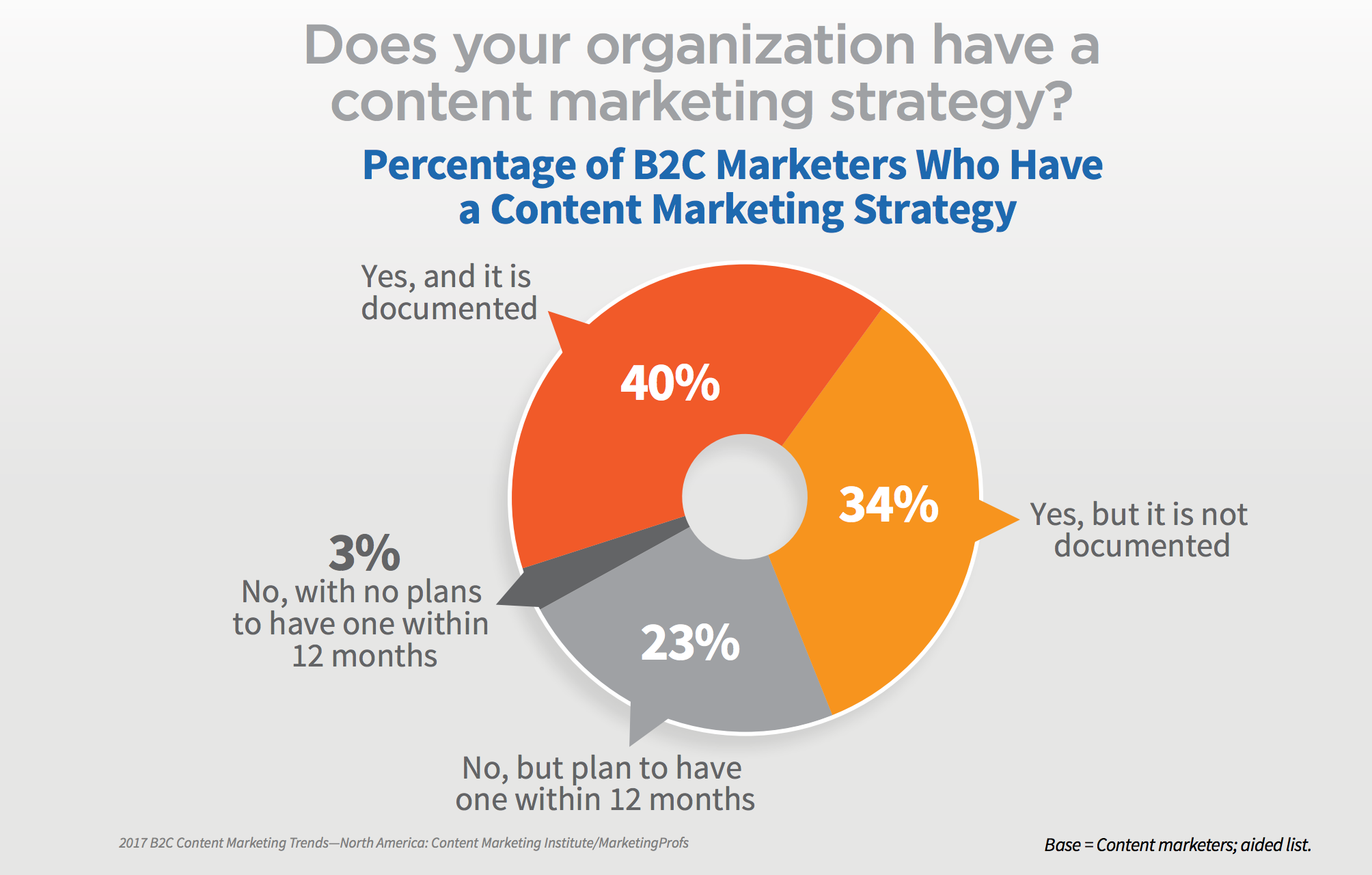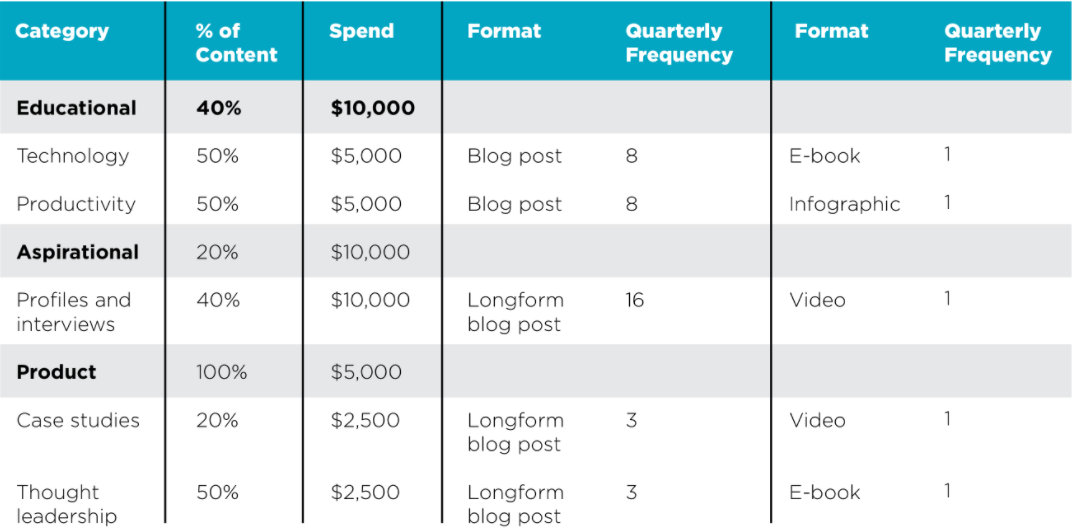B2B
Marketers Are Sabotaging Their Content Programs
When the Content Marketing Institute releases its annual Benchmark report, I beeline for one stat: How many people had a documented content strategy?
Every year, the shockingly low number of marketers who have a documented content strategy has been the most troubling stat in the robust report. I always expect to see a dramatic rise, but it usually lingers around 33 percent. It finally jumped a bit this year—to 37 percent for B2B marketers and 40 percent for B2C marketers.
But that’s still pitifully low.


Two-thirds of content marketers are straight-up sabotaging their efforts by failing to create a documented content strategy. They simply don’t bother to outline their target audience, voice, style, and goals. If I could fix one problem in the content marketing industry, it might be this. And that’s because it’s so crucial to everything we do, especially if you want to evangelize your content efforts within your own company.
Why we’re obsessed with documented content strategies
I lead our content strategy team at Contently. One big change we made over the past year is ensuring that every new client has a documented content strategy in place. Some clients have a robust, documented strategy already, but for those that do not, we create a detailed content plan for free. That’s because we truly believe that a documented content strategy is critical to success. Not having one is a recipe for disaster.
It’s just logical. For starters, if you don’t have a documented content strategy, there’s a good chance you don’t have a clear sense of your goals. And without goals to hit, it is impossible to know whether you’re successful or not. Right now, this is an epidemic within the content marketing industry. According to CMI’s report, 60 percent of B2C marketers and 59 percent of B2B marketers are not clear on what an effective content marketing program looks like.
This is ridiculous, and it needs to improve.
Overcoming your fear of a documented content strategy
I have a simple theory for why marketers struggle to document their content strategy: It’s scary and daunting. Some people may not know what a content strategy is supposed to look like.
We bake content strategy directly into our platform, but anyone can create a reasonably successful strategy by focusing on 10 key components:
Content Mission: The purpose of your content.
Goals: The clear objectives you’d like content to achieve for your organization.
KPIs: How you’ll measure those goals and the benchmarks you’d like to reach.
Tone and Style: A clear, detailed description of what your content should sound like, with examples.
Target Audience: Who you’re trying to reach.
Content Topics: The subjects you’ll cover.
Content Formats: The different types of content you’d like to create. Text, video, infographics, shortform video, etc.
Tagging Structure: A system for tagging content so you can track what’s working and optimize over time.
Content Allocation: How much content you’ll create each month, and how you’ll divvy up your budget between each topic and format. (ex. below)

The process is relatively straightforward, but it forces you to think critically about your content marketing program, pursue some data-driven research [note]We use a set of internal and external tools[/note], and ask tough questions.
As a company, we’ve come to believe in content plans so much that we baked them right into our software so any contributor working on a project can see it. A lack of planning is the biggest reason that content marketing programs fail. We’re excited to be part of the solution.
Content marketing is still a young industry, but it’s heading in the right direction. CMI’s report revealed that 62 percent of B2B marketers and 63 percent of B2C marketers thought their content marketing programs were more successful this year than last. Imagine how much higher that number could be next year if everyone just sits the hell down and plans ahead.
Get better at your job right now.
Read our monthly newsletter to master content marketing. It’s made for marketers, creators, and everyone in between.




